As a freelancer, once you have defined your skills and the services offered, the next crucial step is building a professional portfolio. This helps the potential clients determine why you are right for the job. A brand often defines a story and by being a freelancer, you too become a brand. You as a freelancer must ensure that your story or “brand” is unique, captivating and compelling.
This article will discuss the importance of a portfolio and the six steps to build a professional one as a freelancer:
What is a portfolio?
A portfolio is a catalogue that provides an understanding of your value and unique selling proposition with evidence to back this proposition. A well-made portfolio is more likely to attract and convince high-profile clients to partner with you. With the assistance of visuals and texts you provide credibility, establishing trust and confidence in your future clients.
Why is a portfolio important?
A portfolio gives an insight into your brand. A portfolio is not the same as a resume, as it also showcases your previous clients, projects and work samples, not just your educational background and experiences. Any potential client, especially someone involved in making any kind of international money transfer, would want to look at your previous projects to be confident while partnering with you.

These are six principles to guide you to create a professional portfolio as a freelancer:
Define your niche
Just like it is important to define your skills and niche when you set out as a freelancer, it is also essential to define your skills when building an impressive portfolio. When you are specific about the services you provide, the kind of clients and projects you would like to partner on, it makes your brand specific and personal to future clients rather than general and vague. It also makes it easier for clients to track you because of the specific services of your expertise. If you keep your niche vague, you will have to learn and add different skills to your portfolio each time which may confuse the clients too, decreasing the likelihood of you being chosen as the best-suited candidate.
Show previous projects and Clients
As someone transitioning as a freelancer, there needs to be enough proof to validate your proposition. From the perspective of a to-be client, if there is any previous project or work that you have worked on, it will serve as a reference and help them determine your chances of getting this project, the costs they think are worth of your services, etc. If you think you do not have enough professional projects and clients, add the samples of your work or ask your close circle of friends or family if they need your service which can be added. Do it for free if it helps you strengthen your portfolio.
Tip- Do not include every experience or project you have previously worked on. There may be an urge to add things just to make your portfolio seem packed, but it will not help you gain clients. Three to five projects and clients within your niche will be enough to convince potential clients.
Include your Education and Experiences
A resume cannot be a portfolio, but a portfolio must include your resume. A potential client may want to look at your previous educational background and work experience. This helps depict your soft skills, communicative abilities and positive attitude towards your work etc. As much as delivering valuable service is pursued by a client, factors such as punctuality, honesty, integrity are also a key role in appealing them.
Build a Website Portfolio
Promoting yourself on social media platforms can help you reach a larger audience faster; this includes creating a website portfolio. This may seem overwhelming at first but there are many inexpensive or free options in the market that allow you to create a website portfolio efficiently. You can add testimonials, case studies, or references and samples, so you can show the value of your service and relationship with the existing clients and widen the scope of your network. To know more about networking, read our blog on how to network as a freelancer. Additionally, remember to add SEO friendly terms to improve the search quality of your visibility online.
Tip- Remember to manage and update your portfolio, this helps clients understand the latest projects you’ve partnered on. Also include a contact form for the clients to be able to connect with you better for a query or any related dispute.
Include Testimonials and Case studies
Testimonials and case studies add human elements to your work. Testimonials can either be written or visual in nature. You can ask your existing clients, even if there are not many now, for testimonials or case studies as this adds context to your projects, making them more impactful. As you get more clients, ask each one for their testimonials and case studies.
Conclusion
A well-established portfolio is one of the key principles for a freelancer. In addition to this, for freelancers looking for a solution to receive cross-border payments, we’ve got your back! BRISKPE assists clients to receive international payments in India effortlessly saving time and money on hefty fees. To know more get in touch with us.







